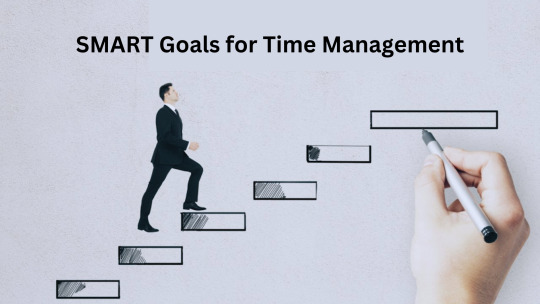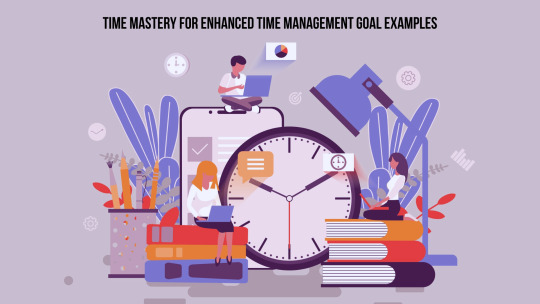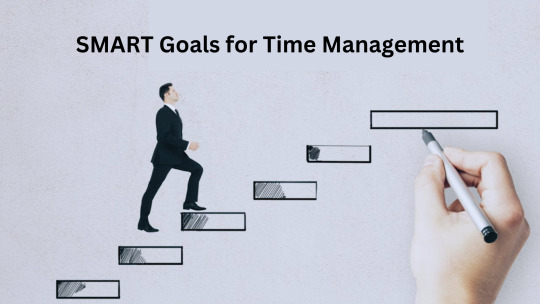#Goal Tracking Software
Explore tagged Tumblr posts
Text
BSI’s goal tracking software helps teams and individuals set clear goals, monitor progress, and reach targets faster. Take control of your productivity with our intuitive tracking tools. Start now and achieve more with less stress.
0 notes
Text
Strategic Goal Alignment: Choosing the Right Employee Goal Tracking Software
In the dynamic landscape of modern workplaces, strategic goal alignment is crucial for organizational success. One key element in achieving this alignment is implementing effective employee goal tracking software. This technology not only streamlines performance management but also ensures that individual and team objectives align seamlessly with the broader strategic goals of the organization.
The Importance of Strategic Goal Alignment
Organizations often face the challenge of translating high-level strategic objectives into actionable tasks for employees. Strategic goal alignment bridges this gap, creating a clear pathway from organizational goals to individual contributions. When employees understand how their work contributes to overarching objectives, they are more engaged, motivated, and focused on achieving success.
Key Features to Look for in Employee Goal Tracking Software
Customization: The ability to tailor goal structures based on organizational needs is essential. Look for software that allows for the customization of goals, key performance indicators (KPIs), and measurement metrics.
Real-Time Monitoring: Choose software that provides real-time tracking and monitoring of employee progress. This feature enables timely feedback and adjustments to keep goals on track.
Collaborative Tools: Opt for platforms that facilitate collaboration and communication. Teams can work together seamlessly, ensuring that collective efforts align with strategic priorities.
Integration Capabilities: Compatibility with other organizational systems, such as project management tools or HR software, enhances the overall efficiency of goal tracking. Integration ensures a holistic approach to performance management.
Data Analytics: Robust analytics capabilities provide valuable insights into employee performance trends. This data-driven approach enables informed decision-making and adjustments to strategy.
Why CATALYST Stands Out
Among the plethora of employee goal tracking software options, CATALYST emerges as a standout choice for organizations seeking strategic alignment. CATALYST goes beyond traditional goal tracking by offering:
Comprehensive Goal Setting: CATALYST allows organizations to define and manage goals at various levels, ensuring alignment from individual contributors to departmental and organizational objectives.
Advanced Analytics: The platform provides sophisticated analytics tools, offering deep insights into employee performance trends. These insights empower organizations to make data-driven decisions for continuous improvement.
User-Friendly Interface: CATALYST is designed with a user-friendly interface, ensuring seamless adoption across all levels of the organization. This accessibility fosters widespread engagement with the goal-setting process.
Integration Capabilities: CATALYST seamlessly integrates with other organizational systems, fostering collaboration across departments and ensuring a cohesive approach to strategic goal alignment.
In conclusion, strategic goal alignment is a cornerstone of organizational success, and the right employee goal tracking software plays a pivotal role in achieving this alignment. CATALYST stands as a cutting-edge solution, empowering organizations to drive performance, foster collaboration, and align individual efforts with overarching strategic goals. Choose CATALYST for a transformative approach to performance management.
#performance management#employee tracking software#best okr software#Goal Tracking Software#goal setting#best okr tracking software
0 notes
Text
Jaytim spite fic:
Me: hm, how much innuendo can I fit in here without Jason catching on?
Brain: y e s
#all the amounts#jaytim spite fic#Jason’s one track mind is on revenge and Tim#and maybe the end goal of taking the latter out on a cutesie da#date#Jason hasn’t updated the software in a while and it shows#or rather he’s running on a Lazarus Pit virus#meanwhile everyone else is just… doing damage and damage control#in that order#jason todd#jaytim#Tim drake
140 notes
·
View notes
Text
oh yeah i got utau i was wondering if i could also make stuff on beepbox then manually just put the notes into that
#utau is not a music editing software it just generates the voice#also beepbox's simplicity is nice but some of the clunkyness is stressful#like i kept accidentally losing notes and shit 😭#i guess i can take advantage of copying and pasting notes into unused tracks#like a clipboard#also if i want to take another hard pivot and forget everything i cared about up to this point & my goals#i could start making games like my scratch days#forget who i am... or remember it again depending on how you look at it
3 notes
·
View notes
Text
if I've learned anything from grad school it's to check your sources, and this has proven invaluable in the dozens of instances when I've had an MBA-type try to tell me something about finances or leadership. Case in point:

Firefox serves me clickbaity articles through Pocket, which is fine because I like Firefox. But sometimes an article makes me curious. I'm pretty anal about my finances, and I wondered if this article was, as I suspected, total horseshit, or could potentially benefit me and help me get my spending under control. So let's check the article in question.
It mostly seems like common sense. "...track expenses and income for at least a month before setting a budget...How much money do I have or earn? How much do I want to save?" Basic shit like that. But then I get to this section:

This sounds fucking made up to me. And thankfully, they've provided a source to their claim that "research has repeatedly shown" that writing things down changes behavior. First mistake. What research is this?

Forbes, naturally, my #1 source for absolute dogshit fart-sniffing financial schlock. Forbes is the type of website that guy from high school who constantly posts on linkedin trawls daily for little articles like this that make him feel better about refusing to pay for a decent package for his employees' healthcare (I'm from the United States, a barbaric, conflict-ridden country in the throes of civil unrest, so obsessed with violence that its warlords prioritize weapons over universal medical coverage. I digress). Forbes constantly posts shit like this, and I constantly spend my time at leadership seminars debunking poor consultants who get paid to read these claims credulously. Look at this highlighted text. Does it make sense to you that simply writing your financial goals down would result in a 10x increase in your income? Because if it does, let me make you an offer on this sick ass bridge.
Thankfully, Forbes also makes the mistake of citing their sources. Let's check to see where this hyperlink goes:

SidSavara. I've never heard of this site, but the About section tells me that Sid is "a technology leader who empowers teams to grow into their best selves. He is a life-long learner enjoys developing software, leading teams in delivering mission critical projects, playing guitar and watching football and basketball."
That doesn't mean anything. What are his LinkedIn credentials? With the caveat that anyone can lie on Linkedin, Mr. Savara appears to be a Software Engineer. Which is fine! I'm glad software engineers exist! But Sid's got nothing in his professional history which suggests he knows shit about finance. So I'm already pretty skeptical of his website, which is increasingly looking like a personal fart-huffing blog.
The article itself repeats the credulous claim made in the Forbes story earlier, but this time, provides no link for the 3% story. Mr. Savara is smarter than his colleages at Forbes, it's much wiser to just make shit up.
HOWEVER. I am not the first person to have followed this rabbit hole. Because at the very top of this article, there is a disclaimer.

Uh oh!
Sid's been called out before, and in the follow up to this article, he reveals the truth.

You can guess where this is going.


So to go back to the VERY beginning of this post, both Pocket/Good Housekeeping and Forbes failed to do even the most basic of research, taking the wild claim that writing down your budget may increase your income by 10x on good faith and the word of a(n admittedly honest about his shortcomings) software engineer.
Why did I spend 30 minutes to make a tumblr post about this? Mostly to show off how smart I am, but also to remind folks of just how flimsy any claim on the internet can be. Click those links, follow those sources, and when the sources stop linking, ask why.
#long post#side note- this is one of the reasons i dont cover shit i dont like in my video essays. yall havent seen me angry.
20K notes
·
View notes
Text
What are the next steps after obtaining an insurance broker license, and how can you generate potential leads using Mzapp CRM software?
Congratulations on securing your insurance broker license! The journey doesn’t end here; it’s just the beginning of building a successful insurance brokerage. Here’s how you can proceed and leverage Mzapp CRM software to find potential leads:
Steps After Getting Your Insurance Broker License
Understand Your Market: Research your target audience (individuals, businesses, or specific sectors).
Develop a Business Plan: Set goals for client acquisition, revenue, and operational processes.
Build a Network: Partner with insurance providers and attend industry events to establish your presence.
Create an Online Presence: Build a professional website and maintain active profiles on social platforms.
Offer Value-Added Services: Educate customers on policies, claims management, and risk assessments.
Using Mzapp CRM Software to Generate Leads
Lead Capture: Utilize Mzapp’s integrated forms and web tracking tools to capture inquiries from your website or social media.
Automated Follow-Ups: Set up personalized email and SMS follow-ups to nurture leads effectively.
Lead Scoring: Prioritize leads based on their interaction history, ensuring you focus on high-potential prospects.
Data-Driven Campaigns: Use analytics to identify what works and launch targeted campaigns.
Seamless Policy Management: Impress leads by showcasing how smoothly you manage policies and claims through Mzapp.
Why Choose Mzapp CRM?
Mzapp CRM simplifies lead management, streamlines operations, and provides insights into customer behavior, making it easier to convert prospects into loyal clients.
Learn more about how Mzapp can transform your insurance business here.
#Question:#What are the next steps after obtaining an insurance broker license#and how can you generate potential leads using Mzapp CRM software?#Answer:#Congratulations on securing your insurance broker license! The journey doesn’t end here; it’s just the beginning of building a successful i#Steps After Getting Your Insurance Broker License#Understand Your Market: Research your target audience (individuals#businesses#or specific sectors).#Develop a Business Plan: Set goals for client acquisition#revenue#and operational processes.#Build a Network: Partner with insurance providers and attend industry events to establish your presence.#Create an Online Presence: Build a professional website and maintain active profiles on social platforms.#Offer Value-Added Services: Educate customers on policies#claims management#and risk assessments.#Using Mzapp CRM Software to Generate Leads#Lead Capture: Utilize Mzapp’s integrated forms and web tracking tools to capture inquiries from your website or social media.#Automated Follow-Ups: Set up personalized email and SMS follow-ups to nurture leads effectively.#Lead Scoring: Prioritize leads based on their interaction history#ensuring you focus on high-potential prospects.#Data-Driven Campaigns: Use analytics to identify what works and launch targeted campaigns.#Seamless Policy Management: Impress leads by showcasing how smoothly you manage policies and claims through Mzapp.#Why Choose Mzapp CRM?#Mzapp CRM simplifies lead management#streamlines operations#and provides insights into customer behavior#making it easier to convert prospects into loyal clients.#Learn more about how Mzapp can transform your insurance business here.
1 note
·
View note
Text
0 notes
Text
#personal finance#free personal finance software#money management#budgeting#financial planning#financial goals#financial freedom#money saving tips#free budgeting software#free money management tools#personal finance apps#financial software comparison#online budgeting tools#free financial software#financial planning tools#money management apps#best free finance apps#financial independence#free personal finance software for students#best free personal finance software for beginners#free budgeting software for small business#free financial software for tracking expenses#how to choose free personal finance software#free personal finance software comparison
0 notes
Text
Effective Time Management: Top 10 SMART Goals Examples To Boost Your Productivity

Time management is a critical skill in today's fast-paced world. Whether you're an employee, manager, or business owner, optimizing how you spend your time can significantly enhance productivity. One proven method for improving time management is by setting SMART goals. SMART goals are Specific, Measurable, Achievable, Relevant, and Time-bound. This article will explore ten time management smart goals examples to help you manage your time more effectively and introduce tools like time tracker software for employees and workforce management software to support your goals.
How to Set Time Management Goals?
Setting time management goals involves identifying areas where time is wasted and finding strategies to maximize productivity. Here’s how to do it:
Identify Priorities: Determine what tasks are most important and need immediate attention.
Set Clear Objectives: Define what you want to achieve with your time management efforts.
Break Down Tasks: Divide larger tasks into smaller, manageable parts.
Create a Timeline: Allocate specific time frames for each task.
Monitor Progress: Regularly check your progress to stay on track.
By following these steps, you can ensure your goals are realistic and attainable.
Top 10 SMART Goals Examples for Time Management
Here are ten SMART goals that can help you improve your time management:

Daily Task Lists
Specific: Create a daily task list each morning.
Measurable: Include at least five tasks per day.
Achievable: Ensure tasks are realistically manageable within the day.
Relevant: Focus on tasks that align with your overall objectives.
Time-bound: Complete the task list by the end of each workday.
Weekly Planning Sessions
Specific: Spend 30 minutes every Sunday planning the week.
Measurable: Plan for at least five tasks each week.
Achievable: Use available tools like calendars or planners.
Relevant: Prioritize tasks that contribute to your long-term goals.
Time-bound: Have the plan ready by Sunday evening.
Limiting Meeting Times
Specific: Reduce meeting durations to 30 minutes.
Measurable: Implement this for all meetings in a week.
Achievable: Communicate this change to all participants.
Relevant: Focus on making meetings more efficient.
Time-bound: Start implementing from the beginning of the month.
Time Blocking
Specific: Use time blocking to dedicate specific hours to particular tasks.
Measurable: Block out at least 3 hours daily for focused work.
Achievable: Use calendar tools to allocate blocks.
Relevant: Improve focus and reduce multitasking.
Time-bound: Start Monday and review after a month.
Using Time Tracker Software
Specific: Implement time tracker software like EMPMonitor.
Measurable: Track time for at least different tasks daily.
Achievable: Integrate software into daily routine.
Relevant: Gain insights into time usage patterns.
Time-bound: Analyze tracked data weekly.
Setting Break Times
Specific: Take a 10-minute break every 90 minutes.
Measurable: Schedule breaks for all workdays.
Achievable: Use alarms or software reminders.
Relevant: Prevent burnout and maintain productivity.
Time-bound: Implement starting tomorrow.
Email Management
Specific: Check and respond to emails only twice a day.
Measurable: Allocate 30 minutes in the morning and afternoon.
Achievable: Inform colleagues of your email schedule.
Relevant: Reduce constant interruptions.
Time-bound: Start from the coming workweek.
Delegating Tasks
Specific: Delegate at least two tasks per week to team members.
Measurable: Identify and delegate tasks every Monday.
Achievable: Choose tasks suitable for delegation.
Relevant: Focus on high-priority tasks.
Time-bound: Review delegation effectiveness bi-weekly.
Learning and Development
Specific: Dedicate 1 hour each week to learning new skills.
Measurable: Choose and complete one course or module monthly.
Achievable: Use online resources like LinkedIn Learning.
Relevant: Improve skills relevant to your job.
Time-bound: Begin this month and review progress quarterly.
Reviewing Goals
Specific: Review and adjust time management goals monthly.
Measurable: Evaluate progress on all set goals.
Achievable: Allocate an hour for this task each month.
Relevant: Ensure goals remain aligned with objectives.
Time-bound: Conduct reviews on the last Friday of each month.
How to Use Workforce Management Software for Time Management

Workforce management software can significantly enhance time management. These tools help track employee performance, manage schedules, and streamline workflow. Here are some tools and how they can be used:
EMPMonitor:
Tracks employee activity and productivity.
Provides detailed reports on time spent on tasks.
Helps identify time-wasting activities.
TimeCamp:
Automatic time tracking and project management.
Help allocate resources efficiently.
Integrate with other project management tools.
Clockify:
Free time tracking tool for teams.
Track billable hours and productivity.
Generate detailed reports for analysis.
You Can Also Watch:
youtube
Conclusion:
Effectual time management smart goals examples are crucial for personal and professional productivity and achievement. By setting SMART goals, utilizing time tracker software for employees, and leveraging workforce management software, you can significantly enhance your time management skills. Implement these strategies and tools to boost your productivity and achieve your objectives efficiently.
#time management#smart goals examples#Smart goal for time management#time tracker software#workforce management#employee time tracking software#Youtube
0 notes
Text
Time Mastery For Enhanced Time Management Goal Examples

Time management is crucial for productivity and success, both in personal and professional life. Effective time management involves setting clear goals and priorities, managing distractions, and using tools like time management goal examples tracker software and workforce management software. Here, we'll explore how mastering time can lead to enhanced productivity with examples of time management goals.
Understanding Time Mastery
Time mastery is the ability to effectively manage your time to achieve your goals. It involves setting SMART goals, prioritizing tasks, and using tools to track and manage time efficiently. By mastering time, you can improve productivity, reduce stress, and achieve a better work-life balance.
SMART Goals for Time Management

Specific: Goals should be clear and specific, answering the questions of who, what, when, where, why, and how. Rather than stating "I want to be more productive," an example of a particular objective would be "I will finish the project report by Friday."
Measurable: To monitor and assess progress, goals ought to be measurable. It helps in staying motivated and focused. For instance, "I will reduce time spent on social media by 30 minutes per day" is measurable because you can track the time spent and see if you are meeting your goal.
Achievable: Goals should be realistic and attainable. While it's good to set challenging goals, they should also be within reach. For example, "I will attend a time management workshop to learn new strategies" is achievable because attending a workshop is within your control.
Relevant: Goals should be relevant to your overall objectives and aligned with your values and long-term goals. For instance, "I will prioritize tasks based on their importance and impact on my goals" is relevant because it directly contributes to better time tracking.
Time-bound: Goals should have a deadline or timeframe. It creates a sense of urgency and helps in prioritizing tasks. For example, "I will finish reading the book by the end of the month" has a clear time frame, which makes it time-bound.
By setting SMART goals, you can increase your chances of success by making your goals more focused, measurable, and achievable.
Examples of Time Management Goals
Improve Task Prioritization: This goal involves using a priority matrix, such as the Eisenhower Matrix, to categorize tasks based on urgency and importance. By focusing on high-priority tasks first, you can ensure that you are working on the most important things and avoid wasting time on less important tasks.
Reduce Procrastination: The goal here is to use the Pomodoro Technique, a time management method that involves working in focused intervals (usually 25 minutes) followed by a short break (usually 5 minutes). This technique helps in breaking tasks into manageable intervals and can reduce the tendency to procrastinate.
Enhance Focus: To enhance focus, the goal is to create a distraction-free work environment. This can be achieved by turning off notifications on your phone and computer, as well as limiting multitasking. You can increase your productivity and level of focus by reducing outside distractions.
Optimize Meetings: This goal involves setting clear agendas for meetings and keeping them concise. By doing so, you can ensure that meetings are productive and time-efficient. Clear agendas help in staying focused and can prevent meetings from going off track.
Delegate Tasks: The goal of delegating tasks is to free up time for more important responsibilities. By delegating tasks that can be done by others, you can focus on tasks that require your expertise and attention, thereby improving your overall efficiency.
These examples demonstrate how setting specific time management goals can help you improve your productivity and manage your time more effectively.
Time Tracker Software for Employees

Time tracker software for employees is a valuable tool used to monitor and manage time spent on tasks. It allows employers to track employee retention productivity, identify time-wasting activities, and improve overall efficiency. These software solutions offer features such as time tracking, task management, and reporting, enabling businesses to optimize their workforce's time usage. Popular options in this category include Toggl, Harvest, and Clockify, each offering unique features and capabilities to meet the specific needs of different organizations. Overall, time tracker software plays a crucial role in helping businesses manage their resources more effectively and improve their bottom line.
Workforce Management Software
Workforce management software helps businesses manage their workforce more efficiently. It includes features such as scheduling, time tracking, and performance monitoring. Examples of workforce management software include Kronos, ADP, and BambooHR.
Final Reflections
Mastering time is essential for enhancing productivity and achieving your goals. By setting SMART goals, using time management goal examples, and optimizing your workflow with workforce management software, you can take control of your time and accomplish more in less time.
#Time management goal examples#Smart goal for time management#Time tracker software for employees#Workforce management software#Employee time tracking software
0 notes
Text
Time Mastery For Enhanced Time Management Goal Examples

Time management is crucial for productivity and success, both in personal and professional life. Effective time management involves setting clear goals and priorities, managing distractions, and using tools like time management goal examples tracker software and workforce management software. Here, we'll explore how mastering time can lead to enhanced productivity with examples of time management goals.
Understanding Time Mastery
Time mastery is the ability to effectively manage your time to achieve your goals. It involves setting SMART goals, prioritizing tasks, and using tools to track and manage time efficiently. By mastering time, you can improve productivity, reduce stress, and achieve a better work-life balance.
SMART Goals for Time Management

Specific: Goals should be clear and specific, answering the questions of who, what, when, where, why, and how. Rather than stating "I want to be more productive," an example of a particular objective would be "I will finish the project report by Friday."
Measurable: To monitor and assess progress, goals ought to be measurable. It helps in staying motivated and focused. For instance, "I will reduce time spent on social media by 30 minutes per day" is measurable because you can track the time spent and see if you are meeting your goal.
Achievable: Goals should be realistic and attainable. While it's good to set challenging goals, they should also be within reach. For example, "I will attend a time management workshop to learn new strategies" is achievable because attending a workshop is within your control.
Relevant: Goals should be relevant to your overall objectives and aligned with your values and long-term goals. For instance, "I will prioritize tasks based on their importance and impact on my goals" is relevant because it directly contributes to better time tracking.
Time-bound: Goals should have a deadline or timeframe. It creates a sense of urgency and helps in prioritizing tasks. For example, "I will finish reading the book by the end of the month" has a clear time frame, which makes it time-bound.
By setting SMART goals, you can increase your chances of success by making your goals more focused, measurable, and achievable.
Examples of Time Management Goals
Improve Task Prioritization: This goal involves using a priority matrix, such as the Eisenhower Matrix, to categorize tasks based on urgency and importance. By focusing on high-priority tasks first, you can ensure that you are working on the most important things and avoid wasting time on less important tasks.
Reduce Procrastination: The goal here is to use the Pomodoro Technique, a time management method that involves working in focused intervals (usually 25 minutes) followed by a short break (usually 5 minutes). This technique helps in breaking tasks into manageable intervals and can reduce the tendency to procrastinate.
Enhance Focus: To enhance focus, the goal is to create a distraction-free work environment. This can be achieved by turning off notifications on your phone and computer, as well as limiting multitasking. You can increase your productivity and level of focus by reducing outside distractions.
Optimize Meetings: This goal involves setting clear agendas for meetings and keeping them concise. By doing so, you can ensure that meetings are productive and time-efficient. Clear agendas help in staying focused and can prevent meetings from going off track.
Delegate Tasks: The goal of delegating tasks is to free up time for more important responsibilities. By delegating tasks that can be done by others, you can focus on tasks that require your expertise and attention, thereby improving your overall efficiency.
These examples demonstrate how setting specific time management goals can help you improve your productivity and manage your time more effectively.
Time Tracker Software for Employees

Time tracker software for employees is a valuable tool used to monitor and manage time spent on tasks. It allows employers to track employee retention productivity, identify time-wasting activities, and improve overall efficiency. These software solutions offer features such as time tracking, task management, and reporting, enabling businesses to optimize their workforce's time usage. Popular options in this category include Toggl, Harvest, and Clockify, each offering unique features and capabilities to meet the specific needs of different organizations. Overall, time tracker software plays a crucial role in helping businesses manage their resources more effectively and improve their bottom line.
Workforce Management Software
Workforce management software helps businesses manage their workforce more efficiently. It includes features such as scheduling, time tracking, and performance monitoring. Examples of workforce management software include Kronos, ADP, and BambooHR.
Final Reflections
Mastering time is essential for enhancing productivity and achieving your goals. By setting SMART goals, using time management goal examples, and optimizing your workflow with workforce management software, you can take control of your time and accomplish more in less time.
#Time management goal examples#Smart goal for time management#Time tracker software for employees#Workforce management software#Employee time tracking software
0 notes
Text
Money Coach: An Ultimate Guide to Personal Finance Management
Discover the ultimate productivity companion with our innovative digital task management app. Seamlessly organize your to-dos, set priorities, and collaborate effortlessly with team members. With intuitive features and customizable settings, stay focused and achieve your goals with ease. Try our app today and revolutionize the way you work!
#Life transformation#Money Coaching#Life Coaching#Abundance Coaching#Relationship Coaching#Law Of Attraction Coaching#Mindset Coaching#Task management#productivity app#digital organizer#to-do list#project management#collaboration tool#prioritize tasks#team productivity#goal setting#time management#task tracking#productivity software#workflow optimization#efficient task management#team collaboration
0 notes
Text
Key Metrics for Success: Implementing Employee KPI Software Strategies
Introduction:
In the dynamic landscape of modern workplaces, organizations are increasingly recognizing the importance of key performance indicators (KPIs) in driving success. Leveraging Employee KPI Software has become a strategic imperative, enabling businesses to measure, analyze, and optimize the performance of their workforce. This article delves into the essential strategies for implementing Employee KPI Software to unlock the full potential of key metrics for organizational success.
Understanding the Core Metrics:
Start by identifying the fundamental KPIs that align with your organizational goals. Whether it's individual performance, project milestones, or team collaboration, understanding the core metrics sets the foundation for effective implementation.
Customization for Relevance:
One size does not fit all. Tailor your KPIs to align with specific roles, departments, and the overall organizational structure. This customization ensures that the metrics measured are relevant and directly contribute to individual and collective success.
Clear Communication and Goal Alignment:
Transparent communication is paramount. Clearly articulate the chosen KPIs, their significance, and how they align with the broader organizational objectives. When employees understand the purpose behind the metrics, they are more likely to engage and strive for success.
Real-Time Tracking and Feedback:
Leverage the real-time tracking capabilities of Employee KPI Software to provide timely feedback. Instant insights into performance allow for quick course corrections, fostering a culture of continuous improvement.
Integration with Performance Reviews:
Integrate KPIs seamlessly into performance review processes. By incorporating key metrics into evaluations, organizations can provide a comprehensive view of an employee's contributions, strengths, and areas for development.
Employee Involvement and Goal Setting:
Encourage employee participation in the goal-setting process. When individuals have a say in defining their objectives and KPIs, there is a higher level of ownership and commitment to achieving those targets.
Data Security and Privacy Measures:
Implement robust data security and privacy measures within the Employee KPI Software. Ensuring the confidentiality of performance data builds trust among employees, fostering a positive attitude towards KPI tracking.
Continuous Training and Support:
Provide ongoing training and support for employees to navigate the KPI Software effectively. A well-trained workforce is more likely to embrace the system, leading to more accurate and meaningful performance metrics.
Scalability for Future Growth:
Choose a KPI Software solution that scales with the organization's growth. Scalability ensures that the system remains effective as the business expands, accommodating additional metrics and complexities.
Evaluating and Adapting Strategies:
Regularly evaluate the effectiveness of your KPI strategies. Use insights from the Employee KPI Software to adapt and refine your approach, ensuring that it remains aligned with evolving organizational goals.
Conclusion:
Implementing Employee KPI Software is not just about tracking metrics; it's a strategic initiative to drive success, foster employee growth, and achieve organizational objectives. By employing these key strategies, organizations can harness the full potential of KPIs, creating a high-performance culture that propels the entire workforce toward success.
#performance management#employee tracking software#best okr software#best okr tracking software#performance management software#performance#goal setting#best performance management system#kpi#kra
0 notes
Text
MAYA’S MORPHICS FIELD CHALLENGE



Hello everyone :) School is starting, and that's a time when stress levels can peak for anyone in the manifesting community. It's tough to wake up to another school year without your dream life, and I know how draining it can be. You might feel like you have to focus on your journey while also tackling school, which is challenging enough on its own. I hope this can help with anything related to manifesting reality, the void state, shifting, lucid dreaming, school, and mindset. Remember, you're not alone in this journey, and it is inevitable you achieve all that you desire!
What are morphic fields
Morphic field audio refers to soundtracks that are designed to interact with the concept of morphic fields, which are theoretical fields that influence patterns and behaviors in nature. These audio tracks often incorporate elements like binaural beats or isochronic tones, which are sound frequencies intended to influence brainwave activity and promote specific mental states.
The idea is that by listening to these audio tracks, individuals you can tap into or resonate with morphic fields, potentially enhancing focus, relaxation, or other desired states. The concept is rooted in the belief that sound can influence the mind and body in ways that align with the patterns and connections proposed by morphic fields.
youtube
youtube
Subliminals or and affirmation tapes with morphic fields
When using morphic fields with subliminals, you can experiment with different approaches to see what works best for you.
Simultaneous Playback:
Play the morphic field audio and subliminal tracks at the same time.
Sequential Playback:
Before: Start with the morphic field audio to create a receptive mental state, then follow with the subliminal tracks. This can help prepare your mind to absorb the affirmations more effectively.
After:
Begin with the sublininal tracks to plant the affirmations in your subconscious, then play the morphic field audio to reinforce and integrate the messages.
Layering:
If you have audio editing software, you can layer the morphic field audio beneath the subliminal tracks, creating a single, cohesive audio experience. This method requires some technical skill but can be very effective.
Experiment and Adjust
Everyone's response to these techniques can vary like all methods so feel free to experiment with different methods and monitor how you feel. Adjust the timing, order, and volume to find the combination that resonates best with you :) it doesn’t have to be methodical at all
Specified Morphic Fields
You can also find specific morphic fields tailored to your desires, such as lucid dreaming, shifting realities, or entering the void state. These specialized audio tracks are designed to help you achieve particular goals by using specific frequencies and energies.
youtube
youtube
youtube
youtube
Similarly to binaural beats or isochronic tones Sounds, it’s best to listen to morphic fields in positive environments because they are highly receptive to surrounding influences. Ensure that your surroundings are calm and uplifting. This might include a tidy space, soft lighting, or calming scents like lavender or sage.
Stay away from negative influences like for example watching horror movies or engaging with negative shifting or void content while listening to morphic fields. Instead, pair your listening sessions with positive and inspiring content. This could include watching manifesting videos, glow-up transformation videos, or reading success stories related to shifting and lucid dreaming.
Combine this with affirming and persisting
the only three affirmations I use are:
I can shift
I will shift
I have shifted
This is very simple and effectively covers the past, present, and future, making it easy to repeat. The brain loves mantras, and these affirmations are designed to reinforce your belief in your ability to shift. This repetition helps to rewire your subconscious mind, aligning your thoughts and actions with your desired outcome. Keep it simple, stay consistent, and watch as your affirmations help manifest your shifting journey.
The challenge
Compile a playlist of subliminals or affirmation tapes, whichever you prefer.
Listen to them while playing morphic fields. You can use headphones or play them out loud; it doesn’t matter.
If you don’t want subliminals or affirmation tapes, find specific morphic fields for your desire, such as wealth morphic fields or shifting morphic fields.
They are easy to find on YouTube. Just search up your topic and then morphic field feel feee to use the ones I recommend as well!
4. Do this in a positive environment. Engage in activities like scrolling on Tumblr, reading success stories, or watching lucid dreaming tips.
5.Outside of this, use the three affirmations: "I can shift," "I will shift," "I have shifted."
You can replace these with anything related to lucid dreaming, the void state, or manifesting—whatever suits your goals, e.g: “I can wake up in the void,” “I will wake up in the void,” “I have woken up in the void before”
6.Make this routine fit your schedule.With school starting, you’ll be busy, so keep it simple and easy!
1K notes
·
View notes
Text

Creator Spotlight: @camberdraws
Hello! My name is Camber (any pronouns), and I’m a mixed media illustrator located in the southwestern United States. I love drawing everything, but I have a special interest in depicting strange creatures and environments, often accompanied by abstract imagery and mark-making. Professionally, I’ve worked creating concept art and 2D assets for museum exhibits, but currently, I am engaged full-time as a software developer and make standalone illustrations in my free time. I’ve been posting art on Tumblr since I was a teenager, and the site has been very welcoming towards my work to this very day!
Check out Camber’s interview below!
Did you originally have a background in art? If not, how did you start?
I’ve had an interest in drawing since I was barely sentient, but at thirteen years old I decided to become “serious” about art. I was all about reading tutorials and doing a ton of studies. I would tote my heavy instructional art books to school every single day (my poor back!) Despite all this, I decided to forgo art school in favor of a bachelor’s degree in Computer Science at my local college. Alongside my major, I received a minor in Art Studio with a specialization in fine art, which totally changed my views on creating artwork and drastically changed my style.
How has your style developed over the years?
As mentioned previously, my style did a 180 after I studied under some very skilled fine art professors! As a kid, my drawings were very realism-heavy and inspired by video game concept art. I mostly worked digitally, too. During college, I was thrown for a loop when we were instructed to do strange things like, for example, make a bunch of marks on paper using pastel, WITHOUT looking, and then turn said marks into a finished piece of art! I quickly and deeply fell in love with abstract work, and especially appreciated images that are not easily parsed by the viewer. Since then, I’ve made it my goal to combine abstract mark-making with more representational subject matter.
What is one habit you find yourself doing a lot as an artist?
Hmmm, one habit I really enjoy as an artist is strictly tracking the amount of time I spend drawing! I currently work a full-time job wholly unrelated to art, so I have to be careful with my time if I want to spend enough hours drawing each week. I created a spreadsheet that allows you to enter the amount of minutes you’ve drawn each day and calculate how much drawing time you still need to reach your weekly goal (I aim for 20 hours a week.) Having such a clear, numbers-based objective keeps me motivated to work like nothing else!
Over the years as an artist, what were your biggest inspirations behind your creativity?
I know this is a common inspiration, but Hayao Miyazaki’s work has been rewiring my neurons since I was a child. Seemingly all of my artistic interests can be summed up by the movie Princess Mononoke: it has strange/abstract creature designs, a strong focus on nature and environmental storytelling, and a mix of dark and hopeful themes. Additionally, I’ve been deeply inspired by video game series such as Zelda, Okami, Pikmin, and Dark Souls. But arguably, none of these have influenced me more than Pokemon! I’ve been drawing Pokemon since I could barely hold a pencil, and I haven’t stopped since! I believe my love of designing creatures originated with my endless deluge of Pokemon fanart during my childhood.
What is a medium that you have always been intrigued by but would never use yourself?
I’ve always been fascinated by 3D mediums and am so tempted to try them out! Whether that’s 3D models created digitally or sculptures made from clay, I profoundly admire artists who have this skill. Oftentimes, it feels like I don’t have time to delve into a totally different artistic paradigm. However, I feel very strongly that learning new skills can enrich your current work. I should take that advice and someday give 3D mediums a shot!
What is a recent creative project that you are proud of?
I am in the process of creating an art book (a dream of mine!) and have been executing smaller drawings of concepts I find interesting from both a visual and storytelling standpoint. A recent drawing for said book is that of a snail made of ink with an ink bottle as a shell, and it went absolutely viral! I’ve never had an experience like this as an artist before and it has been spectacular! I was able to open a shop using my newly acquired art printer and sell many prints of my snail. Creating something original, directly stemming from my interests, and having that resonate with so many people has been unreal. I couldn’t ask for more as an artist!
What advice would you give to younger you about making art that’s personal or truthful to your own experiences?
I would tell my younger self to chill out and experiment more! I was so caught up in the idea that I needed to have a realistic style to be considered “good.” I also believed that technical skill was the only measure of how worthy my art was. That’s not to say technical skill doesn’t matter, but I now firmly believe the creativity and voice of your ideas far outweigh the skill of execution in terms of importance. Technical skills should elevate ideas, not the other way around. Once I began to revel in strange ideas and stories for my work, depicted oftentimes in odd styles or mediums, I truly found my voice as an artist.
Who on Tumblr inspires you and why?
My peers here on Tumblr inspire me more than anything! Sharing my work with contemporaries and giving each other support brings me joy like no other, and keeps me motivated to continue creating. I wouldn’t be where I am today without them! @beetlestench, @theogm-art, @trustyalt, @ratwednesday, @phantom-nisnow, @svltart, @mintsdraws, @mothhh-hh, @jupiterweathers, @thesewispsofsmoke, @picoffee, @fetchiko, @kaisei-ink, and @pine-niidles just to name only a few!
Thanks for stopping by, Camber! If you haven’t seen their Meet the Artist piece, check it out here. For more of Camber’s work, follow their Tumblr, @camberdraws!
1K notes
·
View notes